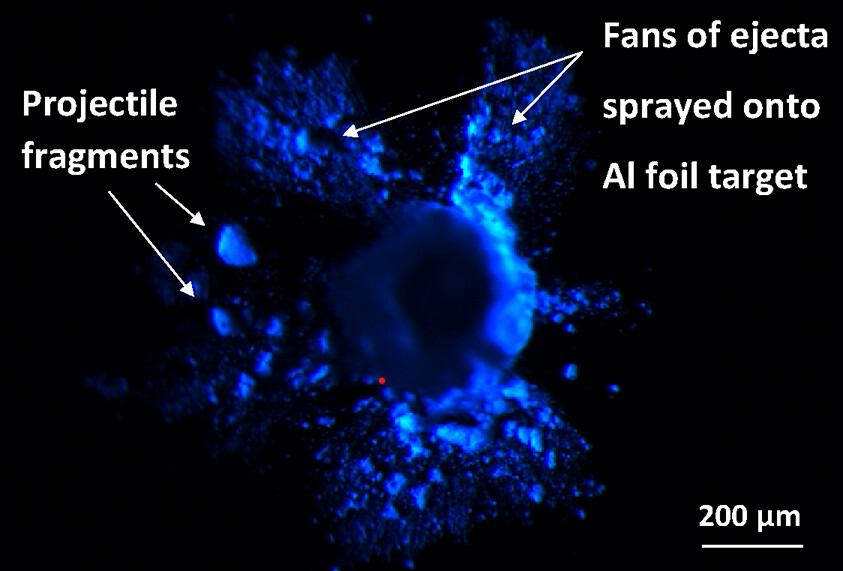
Dr Jon Tandy and collaborators recently published research on microparticles composed of binary mixtures of two common polycyclic aromatic hydrocarbons, establishing how they respond to hypervelocity impact testing, which has implications for sample collection during future space missions.
Polycyclic aromatic hydrocarbons (PAHs), which are organic molecules made of multiple rings with extensive electron delocalisation around them, are important markers for the evolution of galaxies and star and planet formation. Dr Jon Tandy, from the Materials for Energy and Electronics group, with colleagues in the Centre for Astrophysics and Planetary Sciences at Kent, and collaborators from the University of Sheffield, Sheffield Hallam and Chiba University in Japan have recently published a paper establishing how the melting point of two common PAHs changes as the fraction of these in a mixture varies. Studies of these phenanthrene and pyrene mixtures established how the size of the microparticles they form can be modified. They also investigated how these particles respond to high-speed impacts in space by firing them into metal and aerogel targets at speeds of 1 km s-1 (more than 50 times the UK motorway speed limit) using a light gas gun. Subsequent fluorescence microscopy and Raman spectroscopy measurements showed a strong pyrene signature within the captured microparticle residues after impact, but the more volatile phenanthrene molecule evaporated with no discernible trace. This work has just been published in the Journal of the American Chemical Society, one of the most highly respected chemistry journals. It is expected to inform the in-situ analysis of PAH-rich cosmic dust in future space missions through the knowledge that lower space probe speeds may be needed to collect PAH microparticles to avoid loss of more volatile components, so that samples collected reflect actual PAH compositions in space.